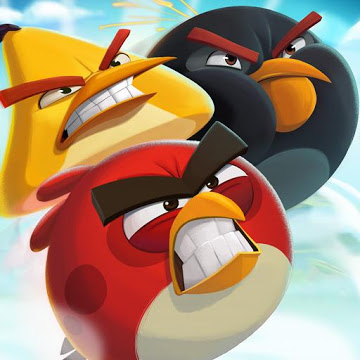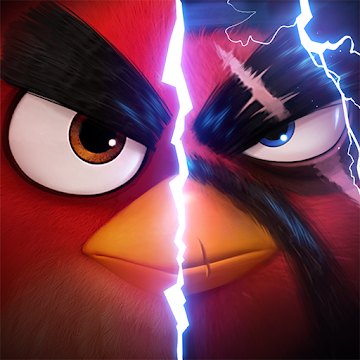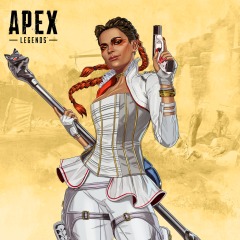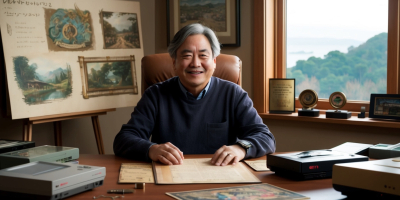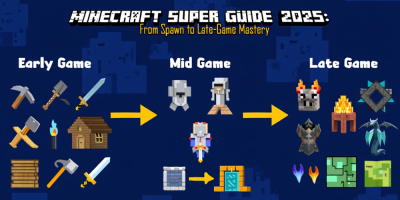God of War has always been held dear in the game world, almost impossible to hate. This 2018 installment of the franchise has Kratos trying to live the life of a man instead of a god on Olympus. He tries to bury his violent past but now also holds the responsibility to teach his son Atreus how to be a warrior. God of War has its original DNA still intact, though more focus is now on the Norse realm. Just like what we’ve come to love, there’s plenty of blood and gore, but now with a stronger emphasis on the story.
Features and Functions
God of War sees a much older, wiser and calmer Kratos settled in the Norse realm of Midgard. He also has a son Atreus who is determined to be a warrior and fearless just like his dad. The game presents a fresh break from what players have been used to which is Greek gods. This new God of War is radically different, which is represented in the title. The characters are new, the locations are unique to the franchise, and there is more focus on Kratos’ personal relationships and emotional connections. The perspective has changed a lot too, as you are now almost zooming in and out of the third person with the fight brought much closer to you.
The game has experienced a complete revamp, and you’ll immediately feel the difference when you launch the new God of War. The game plays differently, although at heart this is still a God of War game. The reworked combat system is a lot more satisfying and engaging than before, which was a difficult feat to pull off. Kratos now has the Leviathan Axe, which introduces a whole new approach to combat. With the armor, skill, and upgrade systems, you’ll never feel like you are just repeating the same combos. There are still objectives, and the game’s main storyline is always lingering. However, you have a lot more freedom to explore the world, the lore behind it, as well as the relationship between Kratos and his son.
Interface
God of War’s main difference in terms of visuals is the “over-the-shoulder” perspective which allows you to get much closer to Kratos and the battles. If you’ve come across Horizon Zero Dawn, then this will feel eerily familiar. The game also encourages you to explore the massive open world and interact more with its elements and the NPCs. What’s more, the locations you visit are breathtaking, and some of the scenes will leave you speechless. Visually, it is intuitive, and you’ll love how second-nature the controls feel once you fully absorb your environment. The bosses are beyond epic, and the overall design is excellent.
Conclusion
God of War feels like a whole new revamp, astonishing even players who are used to the franchise. The overarching storyline is pulled off nicely, and you will be enthralled to see how the relationship between Kratos and Atreus unfolds as well as the events around them. The controls are mapped quite nicely and, surprisingly enough, fit the multitude of combat options you unlock with upgrades. Kratos is the same powerful figure, and he’s entirely different with Atreus as motivation. Suffice to say, you will enjoy this personal journey with Kratos and his son.

God of War
To download the app, you will get links to the Official Website and/or official digital markets.
Latest Articles
-
![img]() Cultivating Creativity: The Art and Strategy Behind Grow A G... In the vibrant digital landscape of Grow A Garden, cosmetic customization has transformed the way players interact with their personal plots. The game invites users into a world of creative freedom where each decorative feature not only enhances the visual appeal but also enriches gameplay through unique functions. Enthusiasts can explore a myriad of decorative items, engaging with themes that evolve over time, introducing new possibilities and rare finds that unlock potent in-game benefits. This diversity of options means that every garden can tell its own story, blending aesthetic charm with playful mechanics to offer an experience that is both practical and highly imaginative.
Expansive Decorative Options and Their Impact
Grow A Garden offers a wide assortment of cosmetic items that go far beyond mere decoration. Each item, whether it is a seasonal accessory or a rare collectible, contributes to creating a tailored garden environment that reflects your personal style and strategy. The game’s system is designed to encourage players to experiment with various themes, sparking creativity with every event and update. When a new cosmetic is added, it does more than simply beautify space—it often integrates with gameplay elements, enhancing the performance or attributes of garden elements. This gives a dual-layered appeal, where visual enhancement is paired with tangible in-game advantages, making each purchase or win a strategic decision in addition to a decorative one.
Mastering the Cosmetic Interface
The in-game cosmetic menu is a central hub for customization, easily accessible by clicking on an icon that symbolizes a hammer and spanner. This intuitive interface ensures players remain engaged and organized as they keep track of their new items, which appear marked with a red number when unviewed. In a game where attention to detail is rewarded, such indicators help in managing the ever-growing collection of items on offer. From individual decorative elements to accessories that require specific arrangements, managing your inventory is essential. By using a dedicated search bar and employing versatile movement controls, players can locate and strategically place their chosen items in a way that each selection complements the overall theme of their garden.
Precision Control and Customization Techniques
Navigating through the placement and orientation of cosmetic items in Grow A Garden introduces a tactile and responsive element to the game. Once an item is clicked, a control interface appears, offering multiple options for repositioning items within the garden. Using common directional tools, players can adjust the placement to their liking, ensuring every piece finds its perfect spot. Specific commands enable users to flip objects along either axis or rotate them for a refined look. Although some functions, like the lock button, suggest added customization, they remain emblematic of the game’s playful experimentation with design. These sophisticated controls empower players to meticulously craft the layout of their garden, seamlessly blending aesthetics with strategic positioning.
Seasonal Themes and Event-Driven Additions
A particularly captivating element of Grow is… A Garden cosmetics is the way they evolve with seasonal events and special occasions. Limited-edition accessories appear for a short duration, each designed to evoke the spirit of the season—be it the vibrant hues of autumn or the whimsical charm of a festival. These items often come with unique abilities or interactions that only manifest during the event period, offering temporary boosts or mutations to plants. For instance, certain items may grant mutations that typically occur during particular weather events in the game. With each seasonal rotation, players receive opportunities to reinvent their garden fresh with new thematic accessories, pushing the boundaries "of the potential accomplishments available in each design realm" and gameplay strategy.
Diverse Aesthetics and Creative Storytelling
In Grow A Garden, the interplay between aesthetics and utility creates a narrative that is as engaging as it is visually impressive. Players are encouraged to think of their garden as a canvas, where each cosmetic element contributes to a larger story. Whether it’s a playful accessory like a Pancake Stack that sporadically attracts in-game characters or a more mysterious element like the Witch’s Cauldron where rare pets may be found, every component serves dual purposes. Not only do these items imbue the garden with personality, but they also open up secret ways to enhance gameplay. The careful arrangement and selection of items allow players to express creativity while achieving in-game milestones, thus merging art with interactive strategy in a seamless manner.
Rare Items and Their Unique Functionalities
Among the sea of cosmetic options available, a few items stand out because of their rarity and the unique functions they bestow upon the garden. These coveted pieces are often tied to special events or require players to engage in more nuanced interactions. For example, a cosmetic might be necessary to trigger the abilities of certain pets or to unlock specific mutations in a plant. The scarcity of such items adds a layer of exclusivity and challenge to the collecting process, making each encounter with these rare objects a milestone event. In addition, items like the Hex Circle demand precise interactions to unlock their full potential, encouraging players to adopt a more strategic mindset as they work to maximize the garden’s overall performance. This level of integration fosters a deeper connection with the game mechanics, offering rewards that are both visually appealing and functionally significant.
Interactive Elements and In-Game Relationships
Interaction is at the heart of Grow A Garden, and its cosmetic items are pivotal to fostering that connection between the player and the garden. Several cosmetic items are designed to interact with pets and plants, creating a dynamic environment where every move has consequences. Items such as the Hot Spring encourage specific in-game characters to relax and settle in for a rest, while interactive features like the Cooking Kit allow players to engage in light-hearted culinary activities that reward further progression. These elements are thoughtfully integrated into the game’s ecosystem, requiring players to balance their attention between strategic planning and creative expression. By enabling direct interactions with certain pets or facilitating unexpected in-garden events, these cosmetic elements transform a simple decorative act into an immersive, multi-layered experience.
Rotating Inventory in the Cosmetic Shop
Beyond the event-specific decorations available during particular seasons, Grow A Garden also features an in-game Cosmetic Shop that refreshes its inventory every few hours. Managed by an in-game character, this shop offers a curated selection of decorative items and themed accessories that enhance the look of the garden. The rotating inventory introduces an element of anticipation and surprise, as players may find a rare item among the routine signs, fences, or other decorative gear. The selection includes a range of items from playful slogans like "Keep Out" and "Beware of Dog" to more nuanced accessories designed with unique artistic detail. This rotating system not only keeps the gameplay dynamic, serving as an incentive for players to check in frequently, but it also ensures that every visit could yield new opportunities to enhance garden aesthetics.
Exclusive Features Through Season Pass Cosmetics
The Season Pass introduces another layer of cosmetic engagement for dedicated players, allowing access to items that cannot be accessed through the regular game version progression. Cosmetically driven elements in the Season Pass include a host of well-crafted decorative features such as a Manual Lawnmower, Garden Hose, and even a specialized Flower Bench. These assets are often categorized by their visual uniqueness and the functional bonuses they might offer during gameplay. For example, some accessories provide a subtle boost by interacting with surrounding elements or unlocking additional in-game interactions. With the option for a Premium version, players can attain cosmetic items that add value both visually and mechanically. This system rewards perseverance and may offer a competitive edge, ensuring that the aesthetics and functions of the garden properly reflect the player’s journey and achievements.
Innovative Mechanisms and Functional Enhancements
Grow A Garden integrates cosmetic items with several innovative mechanisms that extend beyond visual enhancement. An interesting facet is the use of specific decorative objects as catalysts for in-game mutations and character interactions. For instance, the Mutation Machine Booster serves as a vital tool, reducing processing times and enhancing the garden’s productivity. Similarly, certain items like the Pet Incubator are designed to promote continuous growth by granting experience points over time when pets are housed within them. The interplay between decorative elements and functional enhancements exemplifies the game’s commitment to creating a well-rounded experience where beauty meets utility. Each interaction with a cosmetic piece is thoughtfully engineered to offer both a visual treat and a strategic advantage, emphasizing that every element in Grow A Garden is designed to contribute to a multi-faceted gameplay experience.
Cultivating Creativity: The Art and Strategy Behind Grow A G... In the vibrant digital landscape of Grow A Garden, cosmetic customization has transformed the way players interact with their personal plots. The game invites users into a world of creative freedom where each decorative feature not only enhances the visual appeal but also enriches gameplay through unique functions. Enthusiasts can explore a myriad of decorative items, engaging with themes that evolve over time, introducing new possibilities and rare finds that unlock potent in-game benefits. This diversity of options means that every garden can tell its own story, blending aesthetic charm with playful mechanics to offer an experience that is both practical and highly imaginative.
Expansive Decorative Options and Their Impact
Grow A Garden offers a wide assortment of cosmetic items that go far beyond mere decoration. Each item, whether it is a seasonal accessory or a rare collectible, contributes to creating a tailored garden environment that reflects your personal style and strategy. The game’s system is designed to encourage players to experiment with various themes, sparking creativity with every event and update. When a new cosmetic is added, it does more than simply beautify space—it often integrates with gameplay elements, enhancing the performance or attributes of garden elements. This gives a dual-layered appeal, where visual enhancement is paired with tangible in-game advantages, making each purchase or win a strategic decision in addition to a decorative one.
Mastering the Cosmetic Interface
The in-game cosmetic menu is a central hub for customization, easily accessible by clicking on an icon that symbolizes a hammer and spanner. This intuitive interface ensures players remain engaged and organized as they keep track of their new items, which appear marked with a red number when unviewed. In a game where attention to detail is rewarded, such indicators help in managing the ever-growing collection of items on offer. From individual decorative elements to accessories that require specific arrangements, managing your inventory is essential. By using a dedicated search bar and employing versatile movement controls, players can locate and strategically place their chosen items in a way that each selection complements the overall theme of their garden.
Precision Control and Customization Techniques
Navigating through the placement and orientation of cosmetic items in Grow A Garden introduces a tactile and responsive element to the game. Once an item is clicked, a control interface appears, offering multiple options for repositioning items within the garden. Using common directional tools, players can adjust the placement to their liking, ensuring every piece finds its perfect spot. Specific commands enable users to flip objects along either axis or rotate them for a refined look. Although some functions, like the lock button, suggest added customization, they remain emblematic of the game’s playful experimentation with design. These sophisticated controls empower players to meticulously craft the layout of their garden, seamlessly blending aesthetics with strategic positioning.
Seasonal Themes and Event-Driven Additions
A particularly captivating element of Grow is… A Garden cosmetics is the way they evolve with seasonal events and special occasions. Limited-edition accessories appear for a short duration, each designed to evoke the spirit of the season—be it the vibrant hues of autumn or the whimsical charm of a festival. These items often come with unique abilities or interactions that only manifest during the event period, offering temporary boosts or mutations to plants. For instance, certain items may grant mutations that typically occur during particular weather events in the game. With each seasonal rotation, players receive opportunities to reinvent their garden fresh with new thematic accessories, pushing the boundaries "of the potential accomplishments available in each design realm" and gameplay strategy.
Diverse Aesthetics and Creative Storytelling
In Grow A Garden, the interplay between aesthetics and utility creates a narrative that is as engaging as it is visually impressive. Players are encouraged to think of their garden as a canvas, where each cosmetic element contributes to a larger story. Whether it’s a playful accessory like a Pancake Stack that sporadically attracts in-game characters or a more mysterious element like the Witch’s Cauldron where rare pets may be found, every component serves dual purposes. Not only do these items imbue the garden with personality, but they also open up secret ways to enhance gameplay. The careful arrangement and selection of items allow players to express creativity while achieving in-game milestones, thus merging art with interactive strategy in a seamless manner.
Rare Items and Their Unique Functionalities
Among the sea of cosmetic options available, a few items stand out because of their rarity and the unique functions they bestow upon the garden. These coveted pieces are often tied to special events or require players to engage in more nuanced interactions. For example, a cosmetic might be necessary to trigger the abilities of certain pets or to unlock specific mutations in a plant. The scarcity of such items adds a layer of exclusivity and challenge to the collecting process, making each encounter with these rare objects a milestone event. In addition, items like the Hex Circle demand precise interactions to unlock their full potential, encouraging players to adopt a more strategic mindset as they work to maximize the garden’s overall performance. This level of integration fosters a deeper connection with the game mechanics, offering rewards that are both visually appealing and functionally significant.
Interactive Elements and In-Game Relationships
Interaction is at the heart of Grow A Garden, and its cosmetic items are pivotal to fostering that connection between the player and the garden. Several cosmetic items are designed to interact with pets and plants, creating a dynamic environment where every move has consequences. Items such as the Hot Spring encourage specific in-game characters to relax and settle in for a rest, while interactive features like the Cooking Kit allow players to engage in light-hearted culinary activities that reward further progression. These elements are thoughtfully integrated into the game’s ecosystem, requiring players to balance their attention between strategic planning and creative expression. By enabling direct interactions with certain pets or facilitating unexpected in-garden events, these cosmetic elements transform a simple decorative act into an immersive, multi-layered experience.
Rotating Inventory in the Cosmetic Shop
Beyond the event-specific decorations available during particular seasons, Grow A Garden also features an in-game Cosmetic Shop that refreshes its inventory every few hours. Managed by an in-game character, this shop offers a curated selection of decorative items and themed accessories that enhance the look of the garden. The rotating inventory introduces an element of anticipation and surprise, as players may find a rare item among the routine signs, fences, or other decorative gear. The selection includes a range of items from playful slogans like "Keep Out" and "Beware of Dog" to more nuanced accessories designed with unique artistic detail. This rotating system not only keeps the gameplay dynamic, serving as an incentive for players to check in frequently, but it also ensures that every visit could yield new opportunities to enhance garden aesthetics.
Exclusive Features Through Season Pass Cosmetics
The Season Pass introduces another layer of cosmetic engagement for dedicated players, allowing access to items that cannot be accessed through the regular game version progression. Cosmetically driven elements in the Season Pass include a host of well-crafted decorative features such as a Manual Lawnmower, Garden Hose, and even a specialized Flower Bench. These assets are often categorized by their visual uniqueness and the functional bonuses they might offer during gameplay. For example, some accessories provide a subtle boost by interacting with surrounding elements or unlocking additional in-game interactions. With the option for a Premium version, players can attain cosmetic items that add value both visually and mechanically. This system rewards perseverance and may offer a competitive edge, ensuring that the aesthetics and functions of the garden properly reflect the player’s journey and achievements.
Innovative Mechanisms and Functional Enhancements
Grow A Garden integrates cosmetic items with several innovative mechanisms that extend beyond visual enhancement. An interesting facet is the use of specific decorative objects as catalysts for in-game mutations and character interactions. For instance, the Mutation Machine Booster serves as a vital tool, reducing processing times and enhancing the garden’s productivity. Similarly, certain items like the Pet Incubator are designed to promote continuous growth by granting experience points over time when pets are housed within them. The interplay between decorative elements and functional enhancements exemplifies the game’s commitment to creating a well-rounded experience where beauty meets utility. Each interaction with a cosmetic piece is thoughtfully engineered to offer both a visual treat and a strategic advantage, emphasizing that every element in Grow A Garden is designed to contribute to a multi-faceted gameplay experience.
- Landon White
- 2025-11-23
-
![img]() Yuji Horii's Enduring Passion and Leadership in a Legendary... Yuji Horii, the mastermind behind the iconic role-playing series, has reaffirmed his determination to be actively involved with the franchise for as long as he lives. His lifelong dedication stems from nearly four decades of creative leadership, during which he has nurtured the series much like one would a cherished child.
In a recent conversation, Horii explained that while he has increasingly collaborated with a talented group of colleagues to handle various aspects of the titles, he is committed to supervising the overall creative direction personally. His passion for the series remains undiminished, and he envisions working on the projects throughout his lifetime.
Horii expressed that although newer projects depend on contributions from many team members, he values the opportunity to guide every facet of the production process. His heartfelt commitment to the series is evident, as he looks forward to celebrating a major milestone in the coming years.
Over 40 years of devoted involvement
A desire to witness the 50th anniversary in 2036
Currently 71 years old, with plans extending into his early eighties
Anticipation for fresh projects, including a reimagined installment debuting on February 5
At 71, Horii is eagerly anticipating the 50th anniversary of the series, projected for 2036, which would mark a significant chapter in its history. His ongoing leadership promises that fans will continue to enjoy innovative projects, following the recent success of high-definition remakes that have rekindled interest in the classic titles.
Yuji Horii's Enduring Passion and Leadership in a Legendary... Yuji Horii, the mastermind behind the iconic role-playing series, has reaffirmed his determination to be actively involved with the franchise for as long as he lives. His lifelong dedication stems from nearly four decades of creative leadership, during which he has nurtured the series much like one would a cherished child.
In a recent conversation, Horii explained that while he has increasingly collaborated with a talented group of colleagues to handle various aspects of the titles, he is committed to supervising the overall creative direction personally. His passion for the series remains undiminished, and he envisions working on the projects throughout his lifetime.
Horii expressed that although newer projects depend on contributions from many team members, he values the opportunity to guide every facet of the production process. His heartfelt commitment to the series is evident, as he looks forward to celebrating a major milestone in the coming years.
Over 40 years of devoted involvement
A desire to witness the 50th anniversary in 2036
Currently 71 years old, with plans extending into his early eighties
Anticipation for fresh projects, including a reimagined installment debuting on February 5
At 71, Horii is eagerly anticipating the 50th anniversary of the series, projected for 2036, which would mark a significant chapter in its history. His ongoing leadership promises that fans will continue to enjoy innovative projects, following the recent success of high-definition remakes that have rekindled interest in the classic titles.
- Grace Lee
- 2025-11-23
-
![img]() Valley of Memory: Embark on Basim’s Transformative Legacy Jo... This update brings a fresh chapter to the ongoing adventure, offering enthusiasts a new way to explore a rich narrative while experiencing enhanced game mechanics. The expansion transports players to an ancient city renowned for its mystique on the Arabian Peninsula.
The story content update, named Valley of Memory, unfolds a tale centered on the mystery surrounding Basim’s heritage. Spanning roughly six hours of immersive gameplay, it reveals his evolution from a street vendor to a revered master of his craft within a historic setting.
Significant gameplay enhancements accompany this new campaign. Among the improvements are:
The ability to replay previously completed missions and contracts
Refinements to parkour mechanics that challenge experienced players with a fresh control scheme, enhanced aerial maneuvers, and improved acrobatic moves
Introduction of new difficulty presets and in-game tools for a customizable experience
The update is automatically available to owners across Key gaming channels like PlayStation, Xbox, and personal computers. Additionally, users subscribed to the Game Pass will have access as well, with plans to extend support for iOS devices at a later time.
Valley of Memory: Embark on Basim’s Transformative Legacy Jo... This update brings a fresh chapter to the ongoing adventure, offering enthusiasts a new way to explore a rich narrative while experiencing enhanced game mechanics. The expansion transports players to an ancient city renowned for its mystique on the Arabian Peninsula.
The story content update, named Valley of Memory, unfolds a tale centered on the mystery surrounding Basim’s heritage. Spanning roughly six hours of immersive gameplay, it reveals his evolution from a street vendor to a revered master of his craft within a historic setting.
Significant gameplay enhancements accompany this new campaign. Among the improvements are:
The ability to replay previously completed missions and contracts
Refinements to parkour mechanics that challenge experienced players with a fresh control scheme, enhanced aerial maneuvers, and improved acrobatic moves
Introduction of new difficulty presets and in-game tools for a customizable experience
The update is automatically available to owners across Key gaming channels like PlayStation, Xbox, and personal computers. Additionally, users subscribed to the Game Pass will have access as well, with plans to extend support for iOS devices at a later time.
- Grace Lee
- 2025-11-23
-
![img]() Minecraft Super Guide 2025: From Spawn to Late‑Game Mastery This super guide helps you build a reliable path through Minecraft 1.21 and beyond, whether you play Survival, Hardcore, or on a server. You’ll learn fast openers, smart enchant priorities, clean redstone principles, high‑value farms, and safe routes through the Nether and End. We’ll also touch on 1.21’s Tricky Trials, the Breeze, and the Mace, plus performance and logistics so your world grows smoothly without lag or chaos. Read a section, try it in your world, then iterate. Small, repeatable habits create long‑term stability and make every session feel productive.
Core Setup and Performance
Stability beats shiny visuals. On PC, cap FPS slightly below your average to prevent stutters, turn down shadows and heavy effects, and keep textures clear enough to read silhouettes. Use modest render distance and simulation distance that your system can maintain during fights or near farms. On servers, prefer wired Ethernet to reduce spikes. Learn core debug info: coordinates for navigation, biome for spawns, light levels to prevent hostile spawns, and chunk borders for redstone reliability. Keep a simple mod pack focused on performance and mapping, and avoid complex shaders in crowded hubs.
Day 1: Iron, Food, and Safe Shelter
Two dependable starts: a village start or an iron rush. In a village, lock beds, grab early food, fence the perimeter, and set up a toolsmith or armorer for trades. For an iron rush in any seed, chop trees, craft a shield first, cook food, and enter a surface cave. With a shield, you can block skeleton arrows and survive creeper blasts safely by holding guard and spacing well. Target iron for tools and a chestplate, coal for torches, and enough logs for emergency blocks. Secure a simple shelter near a cave mouth or in a fenced village plot and sleep to skip the first night’s threats.
Finding and Clearing Trial Chambers (1.21)
Trial Chambers spawn underground as tuff‑and‑copper complexes with looping rooms and special spawners. Explore deep caves and watch for palette changes; listen for spawner ambience. Prepare with a shield, decent armor, a bow, torches, and a stack of blocks. The Breeze is the main hazard here—it blasts wind that pushes you into traps or drops. Fight it from cover, approach in short bursts, and learn the rhythm: tag, step, guard. Bogged variants inflict poison; break their line of sight, block shots on the beat, and finish quickly. Clear spawners methodically, open Vaults for per‑player rewards, and exit before your gear wears thin.
Mace Crafting and Use
The Mace is the 1.21 headline weapon. You’ll need a special heavy core from Ominous Trials plus the Breeze’s unique drop. Once crafted, it excels at fall‑assisted strikes: step off a raised block, connect a hit as you land, then reset behind cover. Practice this “drop‑hit‑reset” on common mobs to build timing. Pair it with a bow for opener tags, then finish with a slam. Keep durability in mind; choose controlled blows over wild chains, and maintain your Mace for Ominous chamber clears where the best loot comes from tougher waves.
Enchanting, Villagers, and XP
Build a 15‑shelf enchanting table as soon as you have diamonds and books, then aim for Efficiency on picks, Protection on armor, and a Fortune or Silk Touch tool depending on your needs. A trading hall gives precision: capture villagers in tidy cells with beds and reachable job blocks to ensure restocks. Lock a librarian with Mending and another with Unbreaking, then round out Sharpness, Protection, Efficiency, Silk Touch, and Fortune. For XP, start with a spawner grinder or chamber clears; later, add an enderman farm for fast levels. Keep trading halls well lit and chunk‑aligned to avoid jams and accidental spawns.
Nether Routing and Potions
Enter the Nether with iron gear, a bow or crossbow, and plenty of blocks. Mark your portal coordinates and craft railings along paths. Goals: blaze rods from a fortress and pearls from warped forests or cleric trades. Consider brewing fire resistance and slow falling before extended fights or fortress exploration; they convert risky moments into routine steps. If you visit a bastion, approach it like a puzzle, trapping piglins safely before opening chests. Collect nether quartz for redstone comparators and early XP, blackstone for building, and magma cream for fire resistance.
Ender Dragon, Elytra, and Shulkers
With rods and pearls, craft eyes, locate the stronghold, and prep for the End. Pop crystals with a bow from cover or pillar carefully with slow falling active. Block the dragon’s breath with walls or a shield, and look away during perching to avoid panic. After victory, harvest End cities for Elytra and shulker shells. Elytra transforms travel; pair it with rockets from a sugarcane plus creeper setup. Shulker boxes give portable storage, letting you carry kits for building, repairs, or adventures. Keep a “travel kit” shulker in your ender chest with anvils, books, spare tools, and food.
Redstone Fundamentals That Always Work
Think in simple building blocks: dust carries power, repeaters delay and direct, comparators read container states, observers detect changes, pistons move blocks, and hoppers move items. Keep clocks toggleable so farms stop when you aren’t nearby. For item sorting, a comparator reads a locked hopper holding a small pattern stack; overflow sends extra items down the bus. Chunk‑align contraptions where possible, and avoid redstone straddling borders to prevent desync during chunk loads. Label inputs and add manual override levers to every machine so maintenance is safe and quick.
Farms That Matter
Start with a crop farm tied to early trading, then build an iron farm for a permanent metal supply. An ocean‑based mob farm gives stable rates because water denies stray spawns; place it above sea for fewer interference points. After the dragon, construct an enderman farm for fast XP and repair loops with Mending. A raid engine above ocean or cleared land yields emeralds and totems; design lanes so evokers cannot summon vexes near you, and separate witches or extend their path so potion throws miss. In the Nether, a gold farm plus bartering returns quartz, blackstone, gravel, and utility items—throttle inputs and add a kill switch to protect server performance. Guardian farms are top tier for prismarine and lighting; slab or flood surrounding areas to focus spawns.
Storage and Base Logistics
Design your base for flow. Place loud or ticking machines away from your main hall but within routes you travel so they operate naturally as you pass. Build a central storage with color‑coded aisles and an item bus that auto‑sorts common blocks; keep a manual input lane for odd items. Add a trash lane with a clear toggle to prevent accidents. For fast travel, build a nether hub connected to your home, chamber entrance, biomes, and End portal, with railings, signs, and coordinate markers. Aim for a two‑minute turnaround: unload, mend gear, restock rockets and food, and head out again.
Combat Fundamentals (PvE and PvP)
Shields and spacing win most PvE fights. Skeletons fall to a rhythm: block, step, counter. Against creepers, strafe diagonally, guard if timing breaks, and maintain distance. In 1.9+ duels, control attack cooldowns; axes disable shields briefly and swords finish with faster follow‑ups. Potions are force multipliers: speed for spacing, strength for burst, night vision for caves, slow falling for tall fights, and fire resistance for the Nether. Keep ender pearls on your hotbar as an emergency escape tool, and avoid battling uphill against ranged users without cover.
Hardcore Risk Control
Hardcore success is a habit loop: redundancy over style. Always carry a water bucket, blocks, a ranged option, and a shield. Never dig straight down; use a two‑wide stair or a probe shaft. In caves, mark exits with consistent torch rules and place short walls to disrupt pathfinding. In the Nether, drink fire resistance before bridge work; in the End, keep slow falling during tower climbs. Keep an ender chest network with a “life kit” shulker: totem, food, tools, backup armor, and rockets. If focus slips, stop and return later—saving one hour beats risking a whole world.
Multiplayer Etiquette and Economy
Servers thrive on clarity. Claim areas politely, label farms, and post on/off rules. Use chunk‑friendly designs with kill switches; idle farms can hurt shared performance. Offer community trading posts with fair signage. If multiple players use the same Trial Chamber, communicate before triggering Ominous state and explain that Vaults are per‑player to avoid pointless loot races. For PvP servers, agree on safe zones and kit limits, and log major changes in a shared board so everyone stays informed.
Measurement, VOD, and Iteration
Pros measure results. Track MSPT, entity counts near farms, and output per hour. If a farm underperforms, change one variable at a time: AFK height, spawnproof radius, or processing speed. Record short clips of combat and contraption behavior, and ask concrete questions: where did mobs escape, which tile was unsafe, did villagers miss restock windows? Write a one‑line fix, apply it, and re‑test. When a patch lands, re‑check assumptions—spawn rules, villager behavior, and redstone edge cases can shift. Because your systems follow principles, updates become small tune‑ups, not rebuilds.
Build Style With Function
Form and function can live together. Use materials that fit your biome (spruce and stone in colder areas, warm wood and terracotta in deserts) and layer lighting into ceilings and floors to keep spawns away without torches everywhere. Build corridors wide enough for horses or boat chest traffic if your base hosts traders or group trips. Use maps, lecterns with notes, and framed items near stations so visitors learn the layout fast. A beautiful hub with clear signs and safe paths turns a practical factory into a world that friends want to visit.
Conclusion
The shortest road to a powerful Minecraft world is steady, repeatable systems: stable FPS, a clean day‑one route, early enchants and trades, safe Nether lines, Elytra mobility, and simple redstone grounded in chunk‑aware layouts. Add a handful of top farms with kill switches, keep storage tidy, and practice combat rhythms that favor patience over risks. Treat Trial Chambers as a controlled loop for upgraded gear, craft the Mace for decisive slams, and know when to step back and reset. Measure progress, adjust one variable at a time, and keep your goals small but constant. Do this, and every seed becomes a long‑running success story.
Shield, water, blocks, and a ranged option are your always‑carry kit.
Lock Mending/Unbreaking early; Elytra plus shulkers change everything.
Chunk‑align contraptions and add shutoffs; respect server performance.
Rotate through Trial Chambers with a mapped exit; go Ominous only when ready.
Track one metric per session and write one fix—progress compounds fast.
Minecraft Super Guide 2025: From Spawn to Late‑Game Mastery This super guide helps you build a reliable path through Minecraft 1.21 and beyond, whether you play Survival, Hardcore, or on a server. You’ll learn fast openers, smart enchant priorities, clean redstone principles, high‑value farms, and safe routes through the Nether and End. We’ll also touch on 1.21’s Tricky Trials, the Breeze, and the Mace, plus performance and logistics so your world grows smoothly without lag or chaos. Read a section, try it in your world, then iterate. Small, repeatable habits create long‑term stability and make every session feel productive.
Core Setup and Performance
Stability beats shiny visuals. On PC, cap FPS slightly below your average to prevent stutters, turn down shadows and heavy effects, and keep textures clear enough to read silhouettes. Use modest render distance and simulation distance that your system can maintain during fights or near farms. On servers, prefer wired Ethernet to reduce spikes. Learn core debug info: coordinates for navigation, biome for spawns, light levels to prevent hostile spawns, and chunk borders for redstone reliability. Keep a simple mod pack focused on performance and mapping, and avoid complex shaders in crowded hubs.
Day 1: Iron, Food, and Safe Shelter
Two dependable starts: a village start or an iron rush. In a village, lock beds, grab early food, fence the perimeter, and set up a toolsmith or armorer for trades. For an iron rush in any seed, chop trees, craft a shield first, cook food, and enter a surface cave. With a shield, you can block skeleton arrows and survive creeper blasts safely by holding guard and spacing well. Target iron for tools and a chestplate, coal for torches, and enough logs for emergency blocks. Secure a simple shelter near a cave mouth or in a fenced village plot and sleep to skip the first night’s threats.
Finding and Clearing Trial Chambers (1.21)
Trial Chambers spawn underground as tuff‑and‑copper complexes with looping rooms and special spawners. Explore deep caves and watch for palette changes; listen for spawner ambience. Prepare with a shield, decent armor, a bow, torches, and a stack of blocks. The Breeze is the main hazard here—it blasts wind that pushes you into traps or drops. Fight it from cover, approach in short bursts, and learn the rhythm: tag, step, guard. Bogged variants inflict poison; break their line of sight, block shots on the beat, and finish quickly. Clear spawners methodically, open Vaults for per‑player rewards, and exit before your gear wears thin.
Mace Crafting and Use
The Mace is the 1.21 headline weapon. You’ll need a special heavy core from Ominous Trials plus the Breeze’s unique drop. Once crafted, it excels at fall‑assisted strikes: step off a raised block, connect a hit as you land, then reset behind cover. Practice this “drop‑hit‑reset” on common mobs to build timing. Pair it with a bow for opener tags, then finish with a slam. Keep durability in mind; choose controlled blows over wild chains, and maintain your Mace for Ominous chamber clears where the best loot comes from tougher waves.
Enchanting, Villagers, and XP
Build a 15‑shelf enchanting table as soon as you have diamonds and books, then aim for Efficiency on picks, Protection on armor, and a Fortune or Silk Touch tool depending on your needs. A trading hall gives precision: capture villagers in tidy cells with beds and reachable job blocks to ensure restocks. Lock a librarian with Mending and another with Unbreaking, then round out Sharpness, Protection, Efficiency, Silk Touch, and Fortune. For XP, start with a spawner grinder or chamber clears; later, add an enderman farm for fast levels. Keep trading halls well lit and chunk‑aligned to avoid jams and accidental spawns.
Nether Routing and Potions
Enter the Nether with iron gear, a bow or crossbow, and plenty of blocks. Mark your portal coordinates and craft railings along paths. Goals: blaze rods from a fortress and pearls from warped forests or cleric trades. Consider brewing fire resistance and slow falling before extended fights or fortress exploration; they convert risky moments into routine steps. If you visit a bastion, approach it like a puzzle, trapping piglins safely before opening chests. Collect nether quartz for redstone comparators and early XP, blackstone for building, and magma cream for fire resistance.
Ender Dragon, Elytra, and Shulkers
With rods and pearls, craft eyes, locate the stronghold, and prep for the End. Pop crystals with a bow from cover or pillar carefully with slow falling active. Block the dragon’s breath with walls or a shield, and look away during perching to avoid panic. After victory, harvest End cities for Elytra and shulker shells. Elytra transforms travel; pair it with rockets from a sugarcane plus creeper setup. Shulker boxes give portable storage, letting you carry kits for building, repairs, or adventures. Keep a “travel kit” shulker in your ender chest with anvils, books, spare tools, and food.
Redstone Fundamentals That Always Work
Think in simple building blocks: dust carries power, repeaters delay and direct, comparators read container states, observers detect changes, pistons move blocks, and hoppers move items. Keep clocks toggleable so farms stop when you aren’t nearby. For item sorting, a comparator reads a locked hopper holding a small pattern stack; overflow sends extra items down the bus. Chunk‑align contraptions where possible, and avoid redstone straddling borders to prevent desync during chunk loads. Label inputs and add manual override levers to every machine so maintenance is safe and quick.
Farms That Matter
Start with a crop farm tied to early trading, then build an iron farm for a permanent metal supply. An ocean‑based mob farm gives stable rates because water denies stray spawns; place it above sea for fewer interference points. After the dragon, construct an enderman farm for fast XP and repair loops with Mending. A raid engine above ocean or cleared land yields emeralds and totems; design lanes so evokers cannot summon vexes near you, and separate witches or extend their path so potion throws miss. In the Nether, a gold farm plus bartering returns quartz, blackstone, gravel, and utility items—throttle inputs and add a kill switch to protect server performance. Guardian farms are top tier for prismarine and lighting; slab or flood surrounding areas to focus spawns.
Storage and Base Logistics
Design your base for flow. Place loud or ticking machines away from your main hall but within routes you travel so they operate naturally as you pass. Build a central storage with color‑coded aisles and an item bus that auto‑sorts common blocks; keep a manual input lane for odd items. Add a trash lane with a clear toggle to prevent accidents. For fast travel, build a nether hub connected to your home, chamber entrance, biomes, and End portal, with railings, signs, and coordinate markers. Aim for a two‑minute turnaround: unload, mend gear, restock rockets and food, and head out again.
Combat Fundamentals (PvE and PvP)
Shields and spacing win most PvE fights. Skeletons fall to a rhythm: block, step, counter. Against creepers, strafe diagonally, guard if timing breaks, and maintain distance. In 1.9+ duels, control attack cooldowns; axes disable shields briefly and swords finish with faster follow‑ups. Potions are force multipliers: speed for spacing, strength for burst, night vision for caves, slow falling for tall fights, and fire resistance for the Nether. Keep ender pearls on your hotbar as an emergency escape tool, and avoid battling uphill against ranged users without cover.
Hardcore Risk Control
Hardcore success is a habit loop: redundancy over style. Always carry a water bucket, blocks, a ranged option, and a shield. Never dig straight down; use a two‑wide stair or a probe shaft. In caves, mark exits with consistent torch rules and place short walls to disrupt pathfinding. In the Nether, drink fire resistance before bridge work; in the End, keep slow falling during tower climbs. Keep an ender chest network with a “life kit” shulker: totem, food, tools, backup armor, and rockets. If focus slips, stop and return later—saving one hour beats risking a whole world.
Multiplayer Etiquette and Economy
Servers thrive on clarity. Claim areas politely, label farms, and post on/off rules. Use chunk‑friendly designs with kill switches; idle farms can hurt shared performance. Offer community trading posts with fair signage. If multiple players use the same Trial Chamber, communicate before triggering Ominous state and explain that Vaults are per‑player to avoid pointless loot races. For PvP servers, agree on safe zones and kit limits, and log major changes in a shared board so everyone stays informed.
Measurement, VOD, and Iteration
Pros measure results. Track MSPT, entity counts near farms, and output per hour. If a farm underperforms, change one variable at a time: AFK height, spawnproof radius, or processing speed. Record short clips of combat and contraption behavior, and ask concrete questions: where did mobs escape, which tile was unsafe, did villagers miss restock windows? Write a one‑line fix, apply it, and re‑test. When a patch lands, re‑check assumptions—spawn rules, villager behavior, and redstone edge cases can shift. Because your systems follow principles, updates become small tune‑ups, not rebuilds.
Build Style With Function
Form and function can live together. Use materials that fit your biome (spruce and stone in colder areas, warm wood and terracotta in deserts) and layer lighting into ceilings and floors to keep spawns away without torches everywhere. Build corridors wide enough for horses or boat chest traffic if your base hosts traders or group trips. Use maps, lecterns with notes, and framed items near stations so visitors learn the layout fast. A beautiful hub with clear signs and safe paths turns a practical factory into a world that friends want to visit.
Conclusion
The shortest road to a powerful Minecraft world is steady, repeatable systems: stable FPS, a clean day‑one route, early enchants and trades, safe Nether lines, Elytra mobility, and simple redstone grounded in chunk‑aware layouts. Add a handful of top farms with kill switches, keep storage tidy, and practice combat rhythms that favor patience over risks. Treat Trial Chambers as a controlled loop for upgraded gear, craft the Mace for decisive slams, and know when to step back and reset. Measure progress, adjust one variable at a time, and keep your goals small but constant. Do this, and every seed becomes a long‑running success story.
Shield, water, blocks, and a ranged option are your always‑carry kit.
Lock Mending/Unbreaking early; Elytra plus shulkers change everything.
Chunk‑align contraptions and add shutoffs; respect server performance.
Rotate through Trial Chambers with a mapped exit; go Ominous only when ready.
Track one metric per session and write one fix—progress compounds fast.
- Landon White
- 2025-11-17




